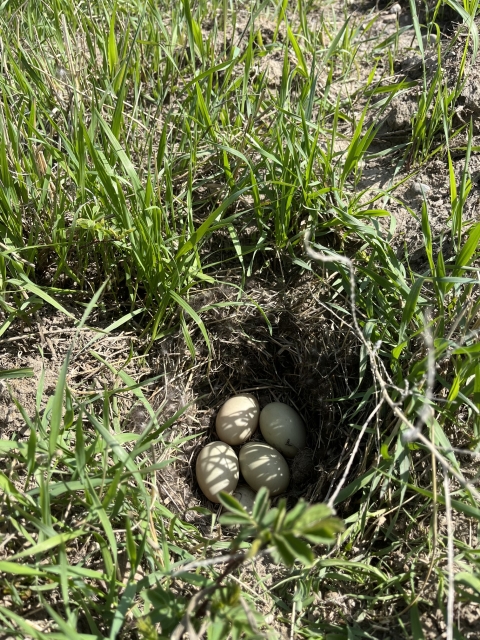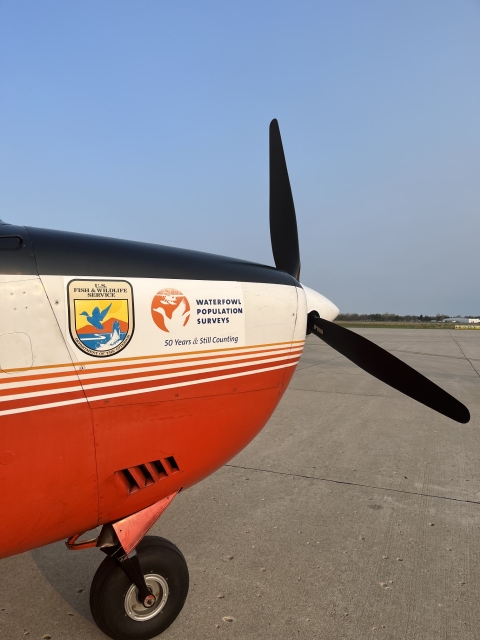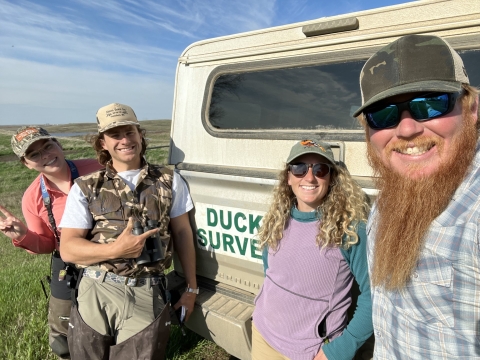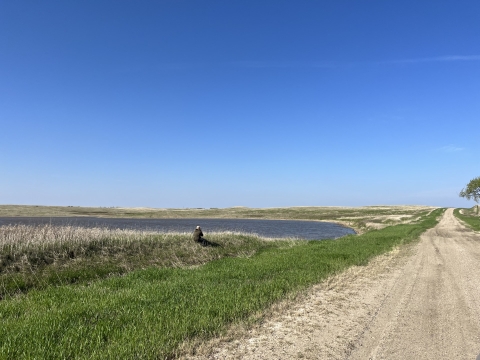Five eggs nestled in a shallow depression, softened by a bed of grass and down feathers, reflected sunlight up at the four of us. We, by chance, had just flushed a hen Northern pintail a mere foot from the truck. The Northern pintail population has been declining for the latter half of the last 50 years, making them a species of special concern. They nest early and usually are found in agriculture fields, making them susceptible to the spring plow. So, finding these prairie gems of promise on survey was a welcomed sight!
The Waterfowl Breeding Population and Habitat Survey (May Survey) deploys 5 ground crews across the great expanse of the North American prairie-parkland every year. The Canadian Wildlife Service also operates 3 ground crews in Alberta, Manitoba, and Saskatchewan. Stateside, the U.S. Fish and Wildlife Service had two crews covering the eastern Dakotas and western Dakotas/Montana.
The ground crew plays a crucial role in the May Survey by providing a visual correction factor for our air crew counterparts. We survey a sub-set of the air transects, which are roughly 18 miles long and 1/4 mile wide, making sure to count every duck, goose, coot, and wetland within the survey bounds. These counts get used to adjust the aerial observations and are extrapolated over the entire crew area.
Our Eastern Dakotas crew this year was Stephanie Catino, USFWS Wildlife Biologist; Abby Walter, USFWS Wildlife Biologist; William Moody, USFWS Wildlife Biologist; and Andrew Zilka, volunteer and aspiring pilot-biologist. We started off in Mitchell, SD and we worked our way northbound to Minot, ND. Shadowing close behind our veteran aircrew of Terry Liddick, USFWS Pilot-Biologist and Dave Fronczak, USFWS Wildlife Biologist.
This year, we found the southern portions to continue to be drier than historical levels. The more north and central we got the more water was on the landscape, similar to wet years recorded in the 1990s. Remnants of snowbanks reminded us of heavy snowfall received in late winter, contributing to water levels in streams and potholes. Pairs and flocks of drakes abounded, predicting nests to come and nests likely hidden by hens we’d never see.
The Northern pintail hen we flushed was one of the many highlights of our field work. Her roadside nest should yield several ducklings, and with any luck, we could be counting her offspring during next year’s survey!








